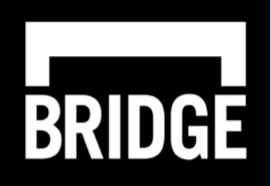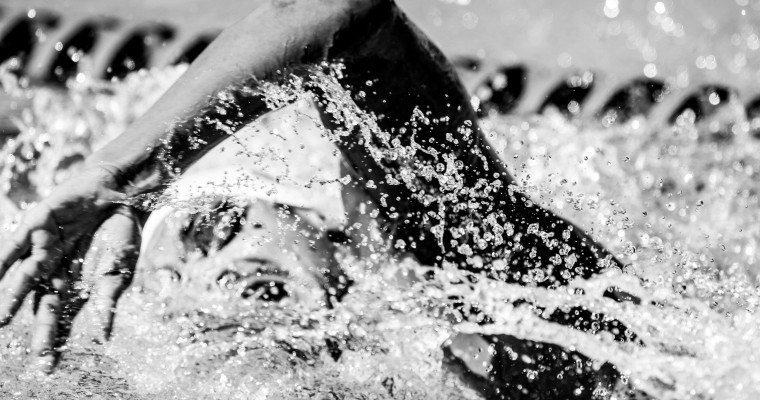This week we’re introducing three dryland exercises to develop powerful long axis strokes. Whereas our recent post on short axis strokes focused on anterior hip drive, quick double-arm activation, and a downhill bodyline on the recovery, we’ll target the following movements unique to long axis strokes: rotational core strength, lateral stability, and single arm activation. Add the following exercises to your repertoire to individualize your strength program for the events that you swim. Begin by incorporating at least one or two of these stroke-specific exercises into each strength training session.
1. Slideboard—Kneeling Freestyle
Your stroke rate, and therefore your speed, is limited by your rotational hip speed. The faster you can rotate your hips, the quicker you can pick up your stroke tempo. This requires core strength in a different manner from short axis strokes. In freestyle and backstroke, you need side-to-side or rotational core strength to generate power. This exercise translates well to free and back by developing the quick change of direction necessary in rotational movements.
2. Side Bridge—Rotation
Lateral stability is key to your long axis stroke efficiency. Proper lateral stability keeps your bodyline tight and allows for maximal force transfer from your lower to upper extremities (and vice versa). Without a stable base on your side, any wiggling of your midsection can throw off your timing and force production, especially during a breath. This causes swimmers to sink the further they rotate to one side. Even if you have great lateral stability, you may tend to favor one side of your body over the other. Lateral exercises can build strength on the weaker side to balance out any discrepancies. Use the side bridge exercise to develop the strength you will need on your side to maintain a stable bodyline.
3. 1-Arm MB Chest Pass
Your triceps activate at the beginning of each catch to drive your arm past your hip, where your stroke acceleration is greatest. Single arm exercises can throw your balance off, as you can no longer rely on both arms to complete a movement. Using one arm at a time, athletes can focus on preferentially activating their triceps muscle group with each repetition. As with any side-to-side comparison, it is normal if one arm is stronger than the other. Single arm exercises reveal these differences and enable athletes to correct them by challenging each arm to work against the same resistance separately. The single arm MB chest pass is a great place to start.
For more stroke-specific training tips, be sure you check out our recent article on Short Axis Strokes. Find helpful tools in training and competition on our blog at BridgeAthletic!
 BridgeAthletic works with elite professional, collegiate, and club swimming programs to provide a turnkey solution for dryland training. Led by Nick Folker, the top swimming strength and conditioning coach in the world, our team builds stroke-specific, custom-optimized dryland programs for each of our clients. The individualized workouts are delivered directly to athletes via our state of the art technology platform and mobile applications. Check Nick and BridgeAthletic out as recently featured in SwimSwam.
BridgeAthletic works with elite professional, collegiate, and club swimming programs to provide a turnkey solution for dryland training. Led by Nick Folker, the top swimming strength and conditioning coach in the world, our team builds stroke-specific, custom-optimized dryland programs for each of our clients. The individualized workouts are delivered directly to athletes via our state of the art technology platform and mobile applications. Check Nick and BridgeAthletic out as recently featured in SwimSwam.
 Nick Folker is the Co-Founder and Director of Elite Performance at BridgeAthletic. Nick’s roster of athletes includes 35 Olympians winning 22 Olympic Medals, 7 team NCAA Championships and over 170 individual and relay NCAA championships. Megan Fischer-Colbrie works as the Sports Science Editor at BridgeAthletic. Megan was a four-year varsity swimmer at Stanford, where she recently graduated with a degree in Human Biology.
Nick Folker is the Co-Founder and Director of Elite Performance at BridgeAthletic. Nick’s roster of athletes includes 35 Olympians winning 22 Olympic Medals, 7 team NCAA Championships and over 170 individual and relay NCAA championships. Megan Fischer-Colbrie works as the Sports Science Editor at BridgeAthletic. Megan was a four-year varsity swimmer at Stanford, where she recently graduated with a degree in Human Biology.
The Championship Series by BridgeAthletic is designed to empower athletes with tips from the pros that will help them reach peak performance come race day. We will be covering competition-focused topics such as nutrition, recovery, stretching, and mental preparation.

